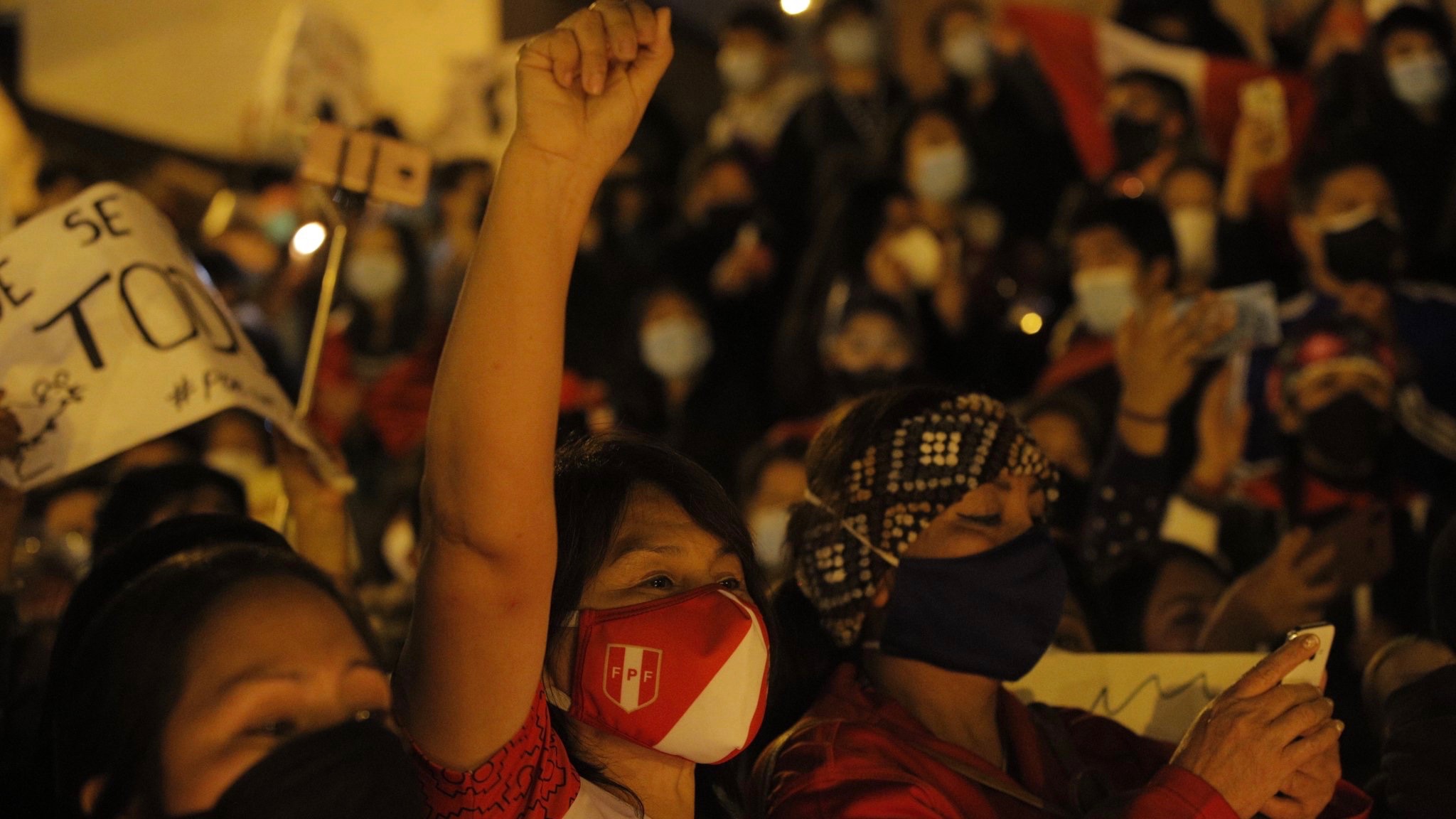The Peruvian Congress, on Monday, November 16, approved Francisco Sagasti from the Partido Morado as interim president. His election follows the resignation of interim president Manuel Merino on Sunday following mass protests. Social movements have insisted that the resignation of Merino is the only the first step and that there is a need for systemic change.
After five short days as interim president of Peru, Merino of the Popular Action party was forced to quit due to outrage over police repression on protesters. The protests in Peru had begun following the impeachment and removal of former president Martín Vizcarra on November 9. On Saturday, the police brutally repressed the protests in Lima, shooting dead two youth, Inti Sotelo Camargo (25) and Bryan Pintado Sánchez (22). According to reports by human rights organizations, police also injured over a 100 people while 40 protesters were disappeared (as of Monday, six people are still missing). According to Katee Salcedo of the Peruvian organization La Junta, this type of repression and police authoritarianism has not been seen since the rule of dictator Alberto Fujimori in the 1990s.
The widespread indignation at the violence further increased the pressure on the already unpopular interim government of Merino. In a matter of hours, 13 of the 18 members of his cabinet, as well as the leadership in Congress, resigned. Eventually, Merino too announced his resignation.
The announcement, while celebrated as a victory of people’s movements, has sent Peru into further political crisis as the presidency was left vacant. Congress met on Sunday to elect a new interim president but the proposal to elect a list led by the left-wing Rocío Silva Santisteban of the Broad Front, was rejected. Notably, it was three right-wing parties that blocked the formation of the interim government – Popular Force (led by Keiko Fujimori, daughter of dictator Alberto Fujimori), Agricultural People’s Front of Peru, an evangelical party, and Podemos Peru.
On Monday, though Congress managed to elect an interim board with Francisco Sagasti of the Partido Morado as president to lead the government, people’s movements in Peru are clear that while the vacancy has been addressed, their struggle must continue.
The protests that began on November 9 were sparked by what social movements, left political parties and civil society organizations in Peru classified as a parliamentary coup. However, over the past week, there has been renewed emphasis on the historic demand of the Peruvian left: to refound the country, beginning with the drafting of a new constitution.

Verónika Mendoza of the left party, New Peru, tweeted, “The citizen mobilization was able to take out the coup-supporting assassin [Merino]. This is the first step to recover democracy. We must remember though that the coup-supporters and corrupt are still in Parliament. They are not the solution, we need deep changes. #NewConstitution.”
Mendoza has called for a second ballot box to be added in the upcoming elections on April 11, 2021 so that Peruvians can vote on whether they want to draft a new constitution to replace the current one drafted in 1993 under the dictator Alberto Fujimori. Movements have demanded a constitution that will address the deep inequalities in Peru caused by decades of neoliberalism, and guarantee the fundamental rights to education, food, housing and employment.
Organizations like La Junta and the New Peru party have vowed to remain on the streets in the coming days. These organizations are determined to demand justice for the victims of police repression and violence, pressurize the authorities to guarantee a democratic transition without catering to interests of those who supported and carried out the coup, and press for real measures to resolve the political crisis. Salcedo of La Junta said, “the political crisis should be resolved by the Peruvian people and not the political and economic ruling elites whose ambition and appetite for power since the 1990s has destroyed the dreams of the people.”





